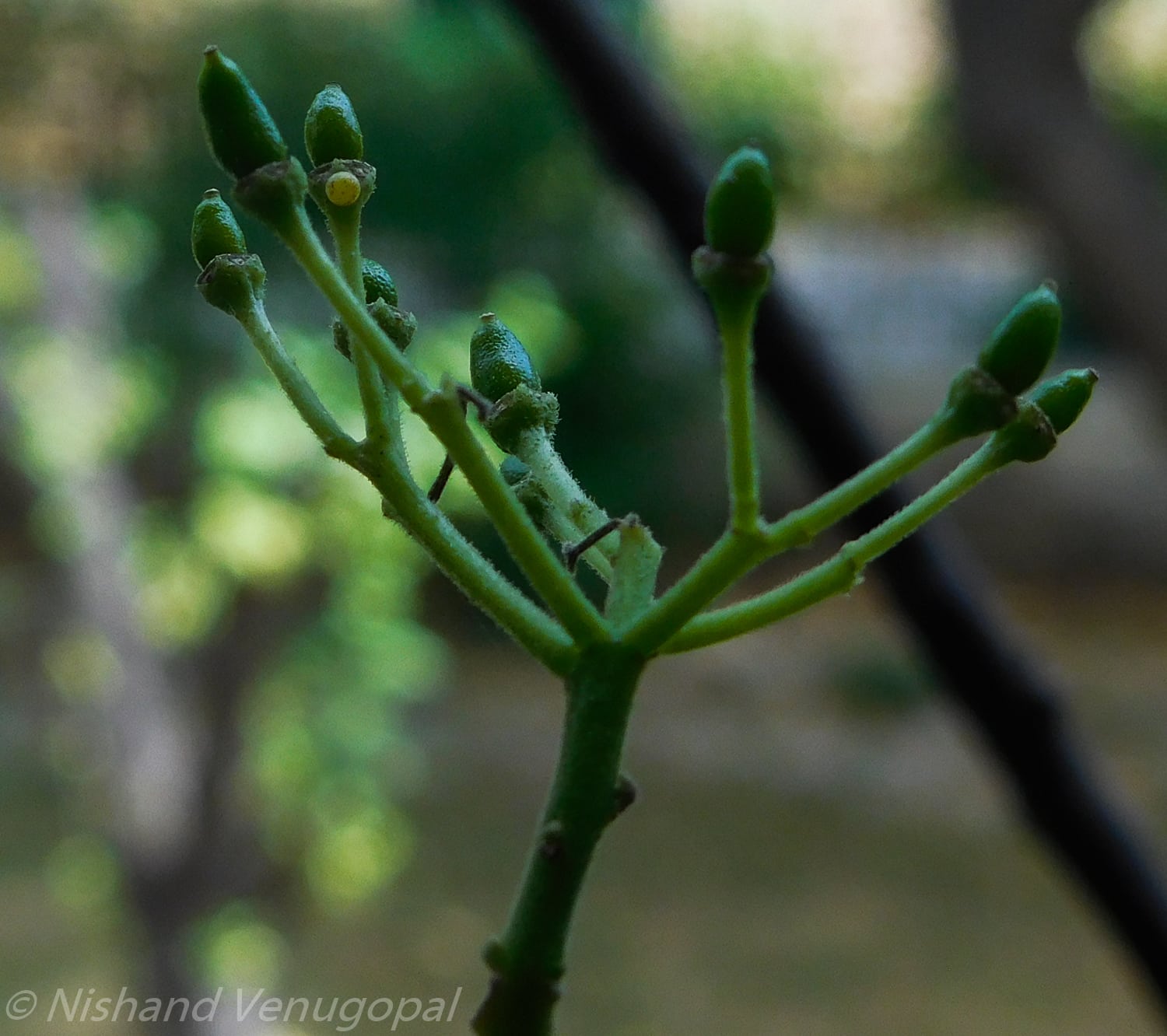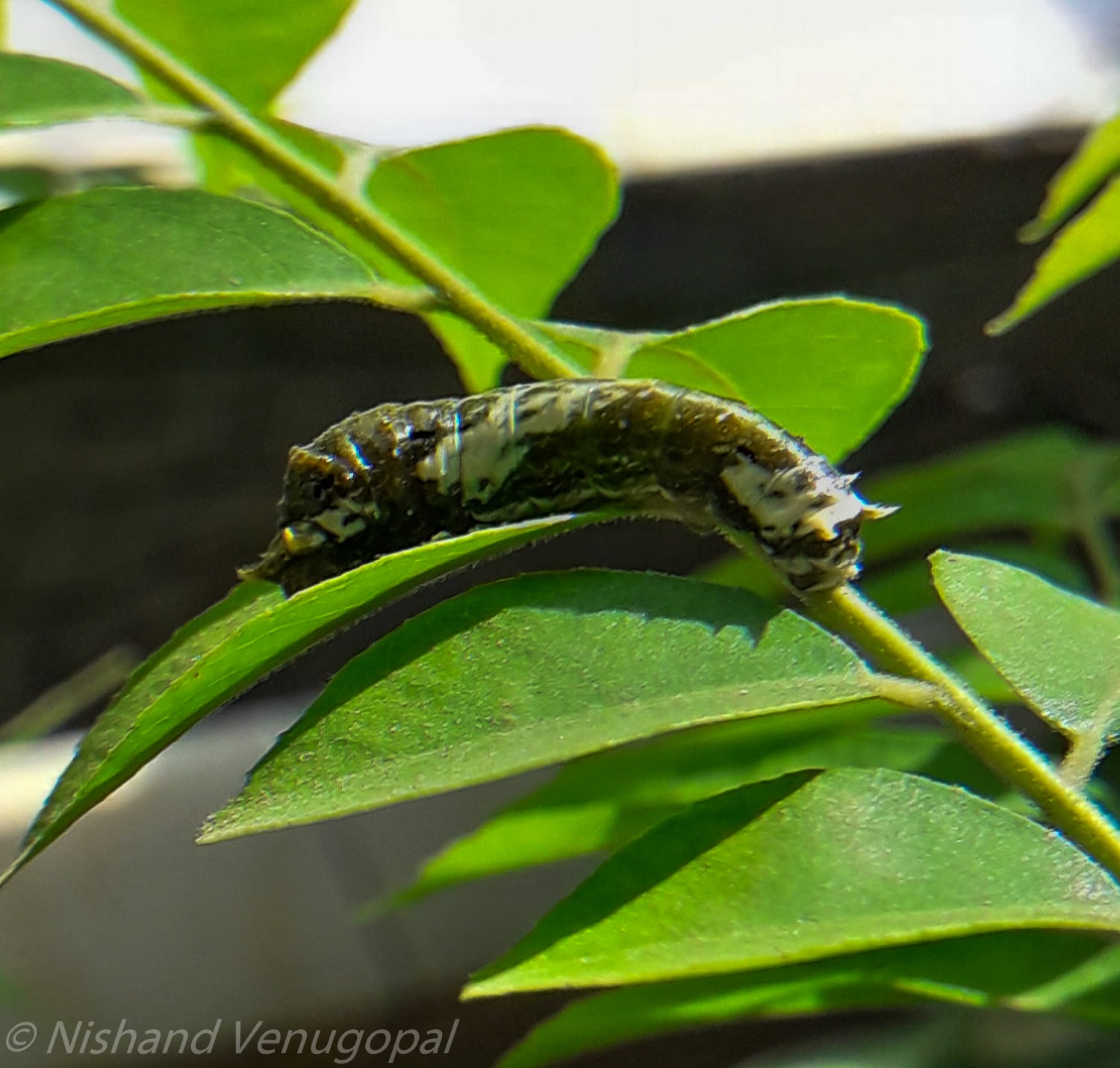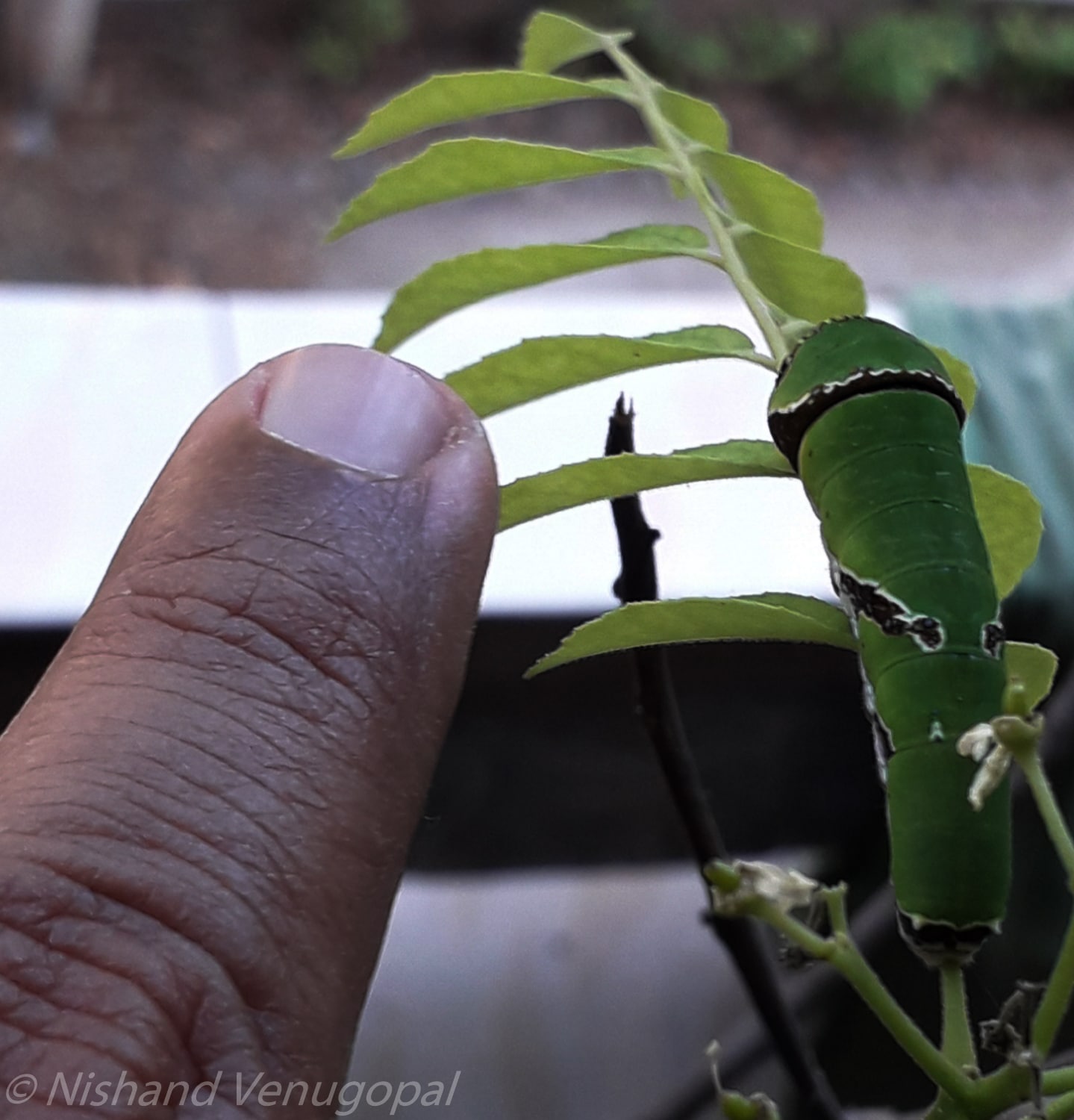“Those who dwell among the beauties and mysteries of the earth are never alone or weary of life.” – Rachel Carson, author of Silent Spring
For humankind, this is a ‘Silent Summer’. While a year ago, we were dreaming of reaching Mars, we now can’t even step out of our own houses. A virus has succeeded in keeping people apart and putting global economies to test. Yet many are trying to make the most out of it by brushing long-unused talents or learning new skills.
As for me, a caterpillar kept me occupied through the past month of the lockdown. Now just like in Eric Carle’s book The Very Hungry Caterpillar, I too have my very own story about a caterpillar!
Like many Indian families, we have a curry leaf plant in our balcony. The plant is a host for the common Mormon butterfly. One fine day, I noticed a few caterpillars munching on its leaves. While many became tasty treats to some nocturnal birds or animals, one survived. This tiny survivor was immediately placed under my protection. I really hoped to see this hungry caterpillar develop into a beautiful swallowtail butterfly, yet I was especially worried because curry leaves are regularly plucked to be used in cooking.

Butterfly egg sits at the apex of a shoot.
This hungry caterpillar fed exclusively on curry leaves. In fact, at one point I was anxious, wondering whether this small plant in my balcony would suffice its appetite, for there was another pair of eyes surveying the plant from our kitchen. Thankfully, our local vegetable vendor came to the rescue, supplying us a generous helping of curry leaves, which deterred the searching eyes and left the plant’s fresh juicy leaves exclusively for the caterpillar’s perusal.
My caterpillar was very picky—I would leave it on one branch but when I’d go to look at it after a while, it would have moved to another one, to munch on a different set of leaves. Not all leaves are equal I thought, some are tastier.
I picked the caterpillar up and put in a large box with a variety of curry leaves, to protect it from predators. In the box, the caterpillar pooped – a lot! Eat, poop, crawl or sometimes chill in one place – that was all it did. Yet I kept a journal to note its growth. Once, the caterpillar escaped out of the box and it took me ten minutes to figure out where it was hiding, in the light net that was then used to cover the box.

Colour change in the pupa stage.
As the caterpillar grew, its body started showing colours. During the instar period (a phase between two periods of moulting in the development of an insect larva), it mostly stayed still. The process of shedding skin takes a lot of energy, but once it was over, the caterpillar started eating and got back to its normal routine.
On the 11th day in the box, the caterpillar turned olive green with white stripes and a slimy layer appeared over its body. By the evening, it had undergone the final instar and turned green. After this, it grew very hungry. It ate a leaf, stayed still for a while, pooped and moved on to another one. Now that it was big and green, I had to be extra careful. We have a birdbath in our balcony which gives respite to thirsty birds like mynas and babblers and occasionally a few squirrels. I had to be extra careful with the caterpillar out there in the open. The lockdown had also invited many migratory species like the rosy starling, to whom the caterpillar could be an enticing snack! Fortunately, their eyes didn’t spot the caterpillar and it survived.

One of the larva stages.
On the 15th day, the caterpillar crawled on to the side of the box and curled up, attaching itself to the box with a tiny sticky thread. By the evening, it started wriggling vigorously and detached itself from the side of the box and fell down. It then went on to cover itself in a green bag of skin and the pupa stage began. The wait continued as anxiety built up every day. Green changed to white and a while later, small antennae could be seen. The body inside the pupa was transforming from a crawling worm to a fabulous butterfly. The final and crucial step of metamorphosis was nearing.
Observing it day and night, thinking of its progress inside the pupa, was a test of patience. Nature takes its own time to reveal. All we can do is wait and watch. The difference was visible; I felt assured that there was a life inside. It was like something mysterious happening inside nature’s magic box. After nine days of staying in the pupa stage, a female Mormon butterfly emerged. It came out during the night. The wings were not fully developed – maybe they didn’t come up in the right position. It was lying upside down struggling to get back to its feet. I brought it outside, careful not to touch it, to see if the wings will gain strength; however, it couldn’t fly. Later when it climbed up to a twig, I left it on the curry plant where it had started its life. It held on to the plant for a while, then fell down. The struggle continued for an entire day. My mind wished for it to grow strong into a vibrant butterfly. Unfortunately, it didn’t survive for too long. It finished its life cycle and flew away into another realm of existence.

Monitoring the growth with patiently.
Looking back, I realise how much this tiny caterpillar taught me through its journey. Watching it grow every other day was an experience I cherish. The struggle for existence is immense for these small creatures; surviving each day is a victory in itself. During its pupa stage, there was a time when I lost my patience. Yet, I knew there was a life form inside that would only appear in its own time.
The process of metamorphosis requires a lot of energy and patience. We too are undergoing a metamorphosis right now. The COVID crisis is perhaps our opportunity to figure out new ways to adapt and sustain as a species. Change always takes time and patience is a virtue. Let’s hope this challenge will bring out the best in us as responsible individuals of our planet.






